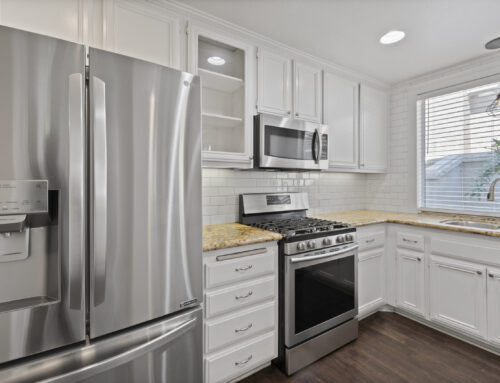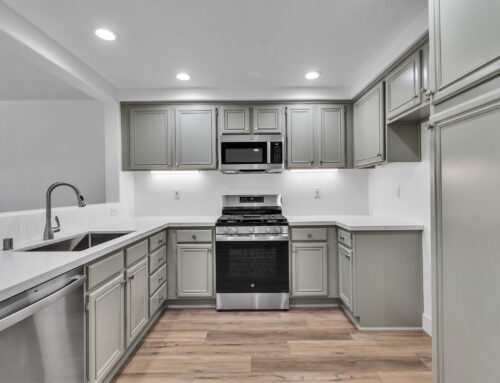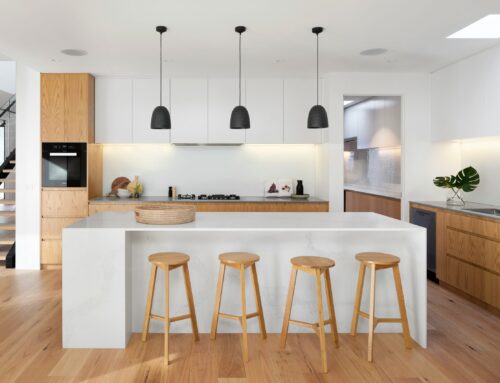Here’s a look at what Real Estate Expert, Steven Thomas has to say about the housing market RIGHT NOW!
With rising interest rates, purchasing power drops for buyers considerably the longer they wait.
Purchasing Power: An increase in interest rates by 1% translates to an 11% drop in the home a buyer is able to afford.
For the past several years, experts and prognosticators across the country had been calling for increasing interest rates. Yet, it never really materialized. To many it was reminiscent of Chicken Little’s, “THE SKY IS FALLING!!” Sure interest rates had their ups and downs, but, in the end, they consistently dropped back down to historical lows, below 4%. That is, until this year.
With the election of President Trump in November 2016, interest rates rose significantly, climbing nearly 1% overnight. The new presidential administration was poised to lower taxes, increase spending on infrastructure, and reform trade around the world. These policies were seen as extremely inflationary and resulted in increasing rates. As financial markets realized that the policies were not going to occur overnight, once again, interest rates dropped below 4%.
It wasn’t unit the end of 2017 where the rubber started meeting the road with the passing of the new tax law. Interest rates responded almost immediately and began to climb. With the announcement of trade reform and a trillion-dollar infrastructure plan, there is tremendous pressure on rates today.
The experts and prognosticators may have had their timing off, but they collectively understood that it was not a matter of “if” interest rates would rise, but “when” they would rise. With the massive manipulation of the monetary policy by the Federal Reserve, the United States has been in economic, uncharted waters, making the art of forecasting rates, not an exact science.
At this point, the pressure on interest rates to rise is real. But, after more than a decade of extremely affordable rates, everybody has become accustomed to these affordable levels. It is time for a brief history lesson:
- 1981 = 18%
- 1990 = 10%
- 2000 = 8%
- 2007 = 6.5%
- Today = 4.5%
Yes, 3.5% is a better rate; however, 4.5% is still a very low rate in historical context. Buyers should not wait for another drop. Instead, they should cash in on today’s mortgage rates. These low levels are an absolute gift based upon the economic history book.
Buyers must understand that the longer they wait to purchase, the greater the risk that rates will rise. As they rise, a buyer’s purchasing power erodes considerably the higher then climb. If mortgage rates climbed by 1% from where they are today, buyers looking for a $2,500 monthly payment would see their purchase power drop from $616,750 to $550,375; that’s a $66,375 drop in purchase price. For buyers looking for a $3,500 monthly payment, it drops from $863,500 to $770,500, a drop of $93,000. And, for buyers looking at a $4,500 monthly payment, it drops from $1,110,125 to $990,625, plunging by nearly $120,000.
Keep in mind, 5.5% is still a very low rate. The trouble is there are younger buyers in the marketplace who have never experienced rates above 5%. The housing market is not going to implode. It will not be the end of the world. But, it will eat into affordability and purchasing power. That 1% increase in mortgage rates will result in an 11% drop is what a buyer is able to afford.
With an improving economy, the new tax law, trade reform, and a new infrastructure plan, expect rates to rise. Buyers should not sit on the sideline and wait for them to drop. If they do, they will watch their purchase power crumble.
Active Inventory: The active inventory increased by 4% in the past two weeks.
The active listing inventory continued to climb in the past two weeks, adding an additional 189 homes, up 4%, and now totals 4,609. The active inventory is increasing at its fastest pace since 2014. It will continue to climb as the market moves deeper into the Spring Market and will climb through the summer, peaking sometime between July and August.
After starting the year with 674 fewer homes compared to the start of 2017, 12% fewer, the year over year difference has drastically diminished. Today, there are only 107 fewer homes compared to last year, a 2% difference.
Demand: Demand increased by 5% in the past two weeks.
Demand, the number of new pending sales over the prior month, increased by 121 pending sales over the past couple of weeks and now totals 2,538, a 5% rise. The last time demand was above the 2,500 pending sale level was back in September 2017. The Spring Market is in full bloom and demand will continue to rise, peaking sometime between April and May.
Last year at this time, demand was at 2,664 pending sales, 126 more than today, or 5%. The number of pending sales has dropped this year because of a serious lack of inventory of homes priced below $750,000. This price range is significant as it represented 62% of all closed sales in 2017. So far this year, there has been 12% fewer homes that have come on the market below $750,000. The lack of homes in the most affordable price ranges has seriously undermined potential demand.
The expected market time, the amount of time it would take for a home that comes onto the market today to be placed into escrow down the road, decreased slightly from 55 to 54 days in the past two weeks, a hot, seller’s market. Last year at this time, the expected market time was at 53 days, very similar to today.
Luxury End: The luxury inventory and luxury demand increased in the past couple of weeks.
In the past two weeks, demand for homes above $1.25 million increased from 343 to 353 pending sales, up 3%. The luxury home inventory increased from 1,704 homes to 1,797, up 5%. From here, expect both demand and the inventory to rise throughout the Spring Market. The current expected market time for all homes priced above $1.25 million increased from 149 to 153 days over the past two-weeks.
For homes priced between $1.25 million and $1.5 million, the expected market time increased from 78 to 88 days. For homes priced between $1.5 million and $2 million, the expected market time decreased from 149 to 142 days. For homes priced between $2 million and $4 million, the expected market time increased from 193 days to 202. In addition, for homes priced above $4 million, the expected market time decreased from 338 to 296 days. At 296 days, a seller would be looking at placing their home into escrow around mid-January 2019.
Want more information on the housing market or curious about your options today? Give me a call!






